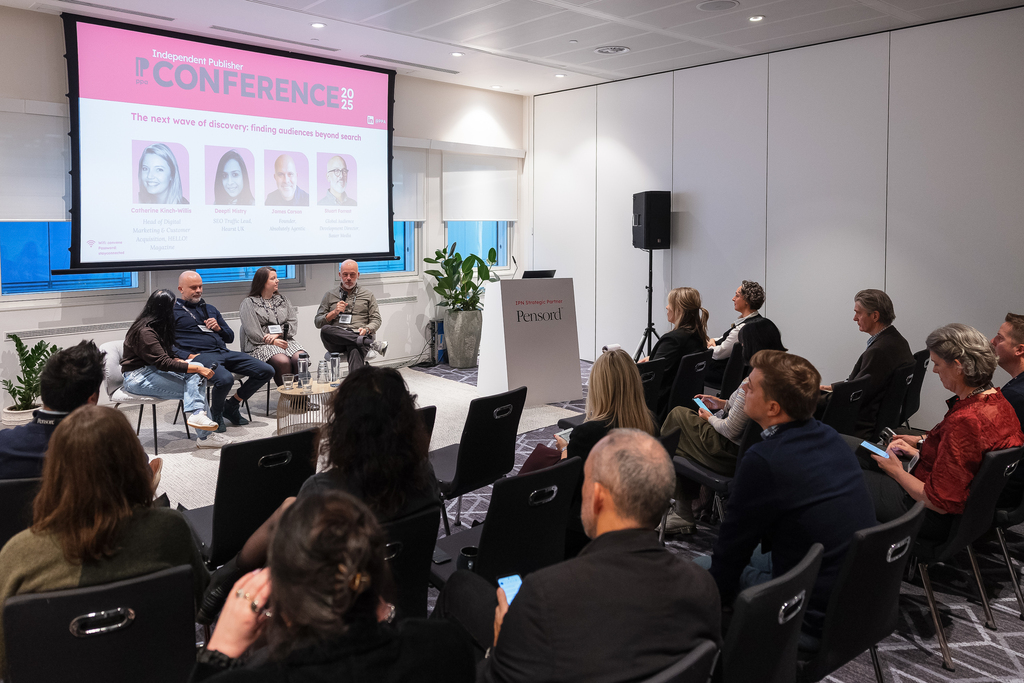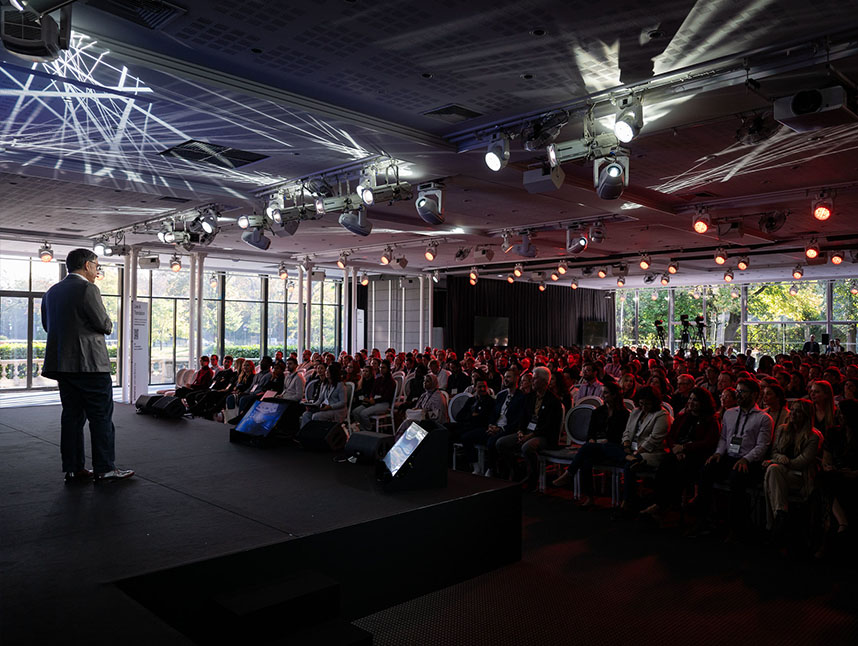No end to disruption in sight: current insights from the publishing industry
Executives from international media companies came together at the INMA World Congress in London in April 2024. The most important insights into the trends, opportunities and challenges they discussed in the publishing industry can be found in this article.
At this year's INMA World Congress, 649 executives discussed the ongoing disruption of the publishing industry and the resulting challenges and opportunities. Earl J. Wilkinson, INMA CEO, announced in his opening speech that 2024 would be a "great" year for the news media. One reason for this is a total of 76 elections that will influence 4 billion people worldwide. The Olympic Games in Paris will also attract a great deal of media attention and intensive reporting. Despite the reverberations of inflation, war and the pandemic, more people than ever are reading journalistic content, while living standards and literacy levels have also risen. Another positive development in the media landscape is the double-digit growth in digital subscriptions. Wilkinson describes the continuing decline in people's trust in news media as a negative development. Added to this is the relentless advance of disinformation and misinformation and the decline in the proportion and volume of advertising.
The most important current insights from the publishing industry
The following text sections are dedicated to the question of what is currently occupying the managers of international media companies. Media professionals from 48 countries were represented at the INMA World Congress and spoke about current challenges and the associated opportunities. Three important current insights can be identified:
- Generative AI: Understanding and implementing generative AI is essential, but the technology has the potential to change and disrupt both news media and society
- Subscription models: digital subscriptions make it possible to maintain and increase revenue. It should be noted that news remains an available product for the broadest part of society and does not become a “niche product for the elite.”
- Digital transformation helps to address younger target groups and enables different generations to be reached with media content
The era of generative AI
Generative AI is no longer a big unknown in the publishing industry, but has long since become something familiar. This was the conclusion of an INMA survey of 55 media representatives in April 2024. The technology promises the media industry - in this order - increased effectiveness, productivity and efficiency. The International CEO of Ringier Media, Dmitry Shishkin, goes even further in his presentation and says that generative AI is on the verge of becoming mainstream for the media and publishing industry. David Caswell, founder of an innovation consultancy focusing on AI workflows in news production, explained in his presentation that the industry is currently in a phase where AI is clearly being applied to existing tasks and workflows. These include the creation of titles and transcripts as well as summaries and search engine optimization. The rapid adaptation of the publishing industry to the presence of AI is becoming clear.

Caswell also talked about how news media priorities will change in the age of generative AI and explained the early signs of another impending shift. He compared the impact of generative AI on journalism to the impact of electricity on society in the late 1880s. His prediction: a second era of journalism and an era of generative AI.
According to him, the fundamental structure of the news and information system will change massively over the next five years and beyond. In the so-called transition phase of the next two to five years, Caswell predicted the emergence of new competitors, products, processes and power structures for the media industry, among other things. New categories of competition will emerge, for example, due to the increasingly democratized production of content (user-generated content). Users also have the opportunity to independently influence their AI consumption - for example, by selecting the AI voice of an audio format or having texts displayed in a different language with the help of AI. Due to the changes predicted by Caswell, the fundamental structure of the news and information ecosystem could look completely different in five years' time than we know it today.

According to Caswell, the response of news producers to AI should be particularly careful and considered. He points to a number of promising opportunities, the main one being the development of guidelines for the use of AI. He also recommends that news producers teach their employees how to work with prompts and how to write prompts. It is important to use AI yourself every day and thus optimize the use of this technology. Caswell ended his presentation with the urgent words "Get involved with AI now." Media professionals should waste no time in this regard.
Katharina Neubert, Vice President Strategy & Investments at the Holtzbrinck Publishing Group, also emphasized in her INMA presentation that publishers should definitely venture into generative AI. She recommends developing tactics based on the "superpowers of generative AI", but points out that people should still remain a central part of the value creation process.
Subscription models as a double-edged sword
Subscription models were also a topic of discussion at the INMA World Congress. In his presentation, Earl J. Wilkinson raised the question of whether the subscription-only model could reduce the impact and influence of the news media in the future. According to Wilkinson, the news industry's shift to digital subscription models "at any cost" has potential problems: subscription models could contribute to a reduction in the number of people who have access to journalistic content. Journalism would no longer be considered an essential commodity, but would instead become a niche product for rich and educated elites.
Wilkinson therefore warned that strategies should be pursued with which journalistic brands can remain essential and maintain their social influence. He appealed for trust in journalism to be regained on a large scale. He also suggested that media companies should try to monetize content other than news to ensure their financial sustainability.
Diversification in addressing target groups
The media consumption behavior of the young target group differs significantly from that of older target groups. It is an important audience that is worth addressing for news media. At the same time, this target group is one of the strongest in terms of news avoidance. An adapted approach is therefore essential. In her presentation, Kassy Cho, founder and editor-in-chief of the Taiwanese media company Almost, spoke about this problem. The journalist recommended that media companies invest in young people, as they are the future audience. In order to reach the young target group, she named social-first methods as an important approach for media companies.
The journalist described how news media have to "find" young people with their content so that they consume it. It is important to find the target group on the platforms where they are and to address them with the topics they are interested in. According to Cho, many topics that the young target group pays attention to - cultural imperialism, decolonization, human rights and others - are missing from most media companies. Only by adapting content to the target group can media companies help ensure that the news they produce reaches their readers. This requires a better understanding of the target group, in this case: a better understanding of the young generation.
Patric Hamsch, deputy head of the media department of the Swedish company NWT Media, spoke in his presentation about how media companies can reach the young target group of 18 - 29 year olds. He also cited knowledge as the basis: Media companies should learn more about the needs, interests, problems and passions of the target group in order to be able to address them. This is because journalistic content with high relevance can be created by collecting data on this target group.
Hamsch also revealed insights into a project to increase the appeal to the younger target group for the Swedish newspaper Nya Wermlands-Tidningen: The launch of a reduced subscription price for under-30s. Since then, 16 to 24-year-olds have been reading the content free of charge, while 25 to 30-year-olds pay a price of five euros per month. This has made it easier and cheaper for the young target group to subscribe to journalistic content. According to Hamsch, a deep understanding of the target group is essential for projects like this.
Tomasz Grabowski, member of the Management Board of the Polish media group Agora SA, also spoke about adapting content to individual target groups in his presentation. The potential recipients of journalistic content currently comprise five generations. The focus should therefore be on adapting media companies' products and improving them across generations. Grabowski proposes a product with "different flavors" that should be aimed for in order to bridge differences between generations.
“Editors cannot complete the transformation; rather, it is something that companies must internalize and incorporate into their muscle memory. ” (Earl J. Wilkinson, CEO INMA)
Top 3 current challenges for media companies
The INMA survey of 55 managers already mentioned in the text impressively highlights the three biggest current challenges for media companies. It shows that maintaining and increasing consumer sales is the top priority this year, as it was last year. Understanding and using generative AI follows in second place. The survey makes it clear that generative AI was not yet a cause for concern for respondents last year. The technology has thus made a considerable leap in its presence for the media industry. Almost unchanged is the issue of diversification and balancing different sources of income, which was cited as the third biggest challenge in both 2023 and 2024.

Conclusion
The insights shared at the INMA World Congress make it clear that the publishing industry is still in a state of upheaval. New opportunities and challenges are constantly being added for media professionals, forcing them to adapt to change.
This year, the use, introduction and understanding of generative AI in particular will bring major changes. Prompt action is therefore particularly important in order to take advantage of this technology. Generative AI is also used in Purple 's CMS. The Purple Prompts feature simplifies editors' workflows by automating repetitive tasks and thus supports the transformation of publishers.
Another challenge for the publishing industry is the expansion of digital subscription models. This business model should be viewed critically, as it is not only the profit maximization that counts, but also that journalism remains relevant for society as a whole.
Media companies are also undergoing a transformation when it comes to addressing different target groups. The importance of individualized content formats and knowledge of the interests of the younger target group in particular are significant.
We accompany you on your digital journey. Get in touch with us and find out more about Purple, the AI-based digital publishing platform.






%201.svg)











